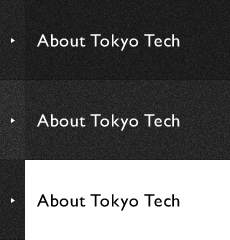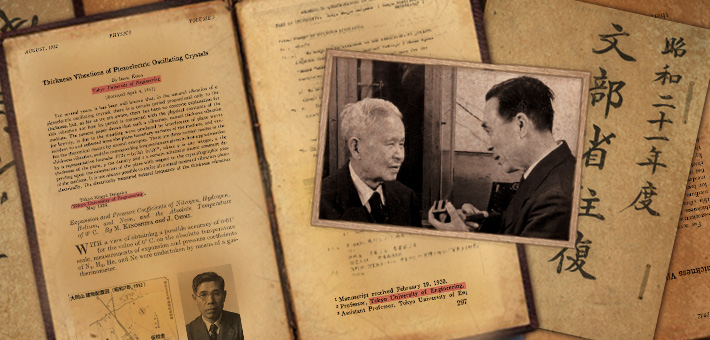
A less-known fact about Tokyo Tech is that when the Institute earned the status of a degree-conferring university in 1929, its name was changed from Tokyo Higher Technical School to Tokyo University of Engineering, not to the current Tokyo Institute of Technology. A number of groundbreaking papers were published under this transitory name.
World-renowned research findings published under the name Tokyo University of Engineering
Oscillators with near-zero frequency variation at room temperature
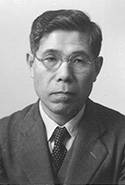
Dr. Issac Koga
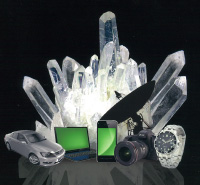
Diverse applications of crystals
Tokyo Tech's Issac Koga (Issaku Koga) invented a new method for cutting quartz crystal in 1932. He and his group developed crystal oscillators with very small temperature-dependence.
Without crystal oscillators, neither smart phones nor CPUs would function as they do today. They may be low-profile but are requisite in today's information oriented society.
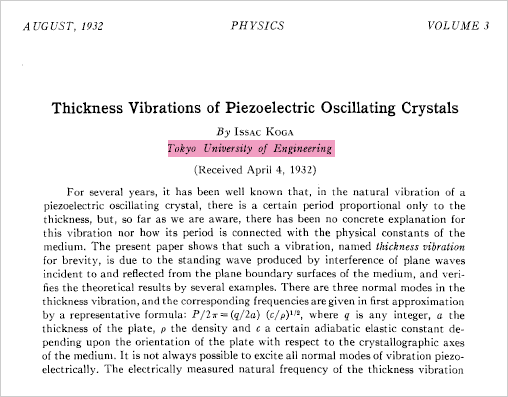
Koga's research paper published in 1932 about crystal oscillators writes Tokyo University of Engineering as his affiliation.
Invention of ferrite
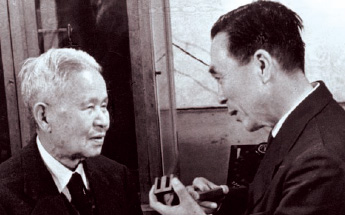
Dr. Kato (left) and Dr. Takei
Dr. Yogoro Kato and Dr. Takeshi Takei invented magnetic ferrite in 1930. Their affiliation in the original research paper about the invention was Tokyo University of Engineering.

Affiliation highlighted
Today ferrite is a key material for cutting-edge electronic devices. By applying a strong magnetic field, hard ferrites become permanently magnetized and are applied to speakers, headsets, and floppy disks. Soft ferrites become magnets while in a magnetic field and are demagnetized when the magnetic field is removed. Their applications include flat-screen televisions, PCs, automotive components, and microwave ovens.
Tokyo Tech and TDK Corporation have been honored by the Institute of Electrical and Electronics Engineers (IEEE) with a milestone award for the development of ferrite materials and their applications. The affiliation of Kato and Takei engraved in the plaque is Tokyo Institute of Technology, unlike the original paper.
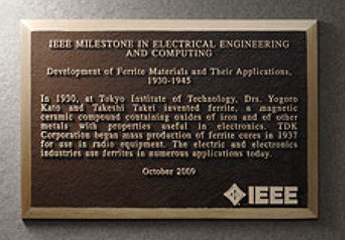
IEEE Milestone plaque
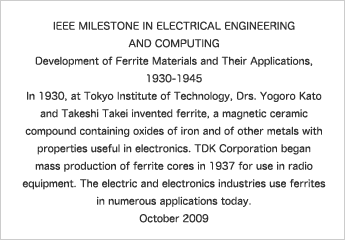
IEEE plaque citation
Determination of absolute zero
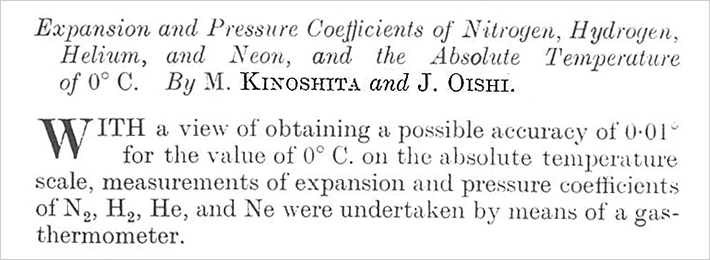

Article on the determination of absolute zero written by Drs. Kinoshita and Oishi in Philosophical Magazine Series 7, 1936
Renamed Tokyo Institute of Technology
Due to lack of records on the change of name, it is impossible to find definitive information on the time when Tokyo University of Engineering was renamed Tokyo Institute of Technology. On the basis of circumstantial evidence, however, there has been conjecture about the timing.
1946 correspondence of the Ministry of Education
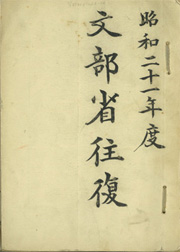
1946 correspondence of the Ministry of Education
Tokyo Tech Museum archives include a file of correspondence with the Ministry of Education dated 1946. This file contains a handwritten manuscript in Japanese and typed documents in English sent to the ministry. In these documents, the name Tokyo University of Engineering has been crossed out and changed to Tokyo Institute of Technology.
These documents were replies to questionnaires regarding students' welfare sent from the ministry to universities at the request of the General Headquarters of the Allied Forces. Hence, Japanese answers were translated and typed in English. Three questions were included in the questionnaire. Copies of all three answers in English are archived at the museum. However, only one copy of the handwritten Japanese manuscripts, the third answer sheet, was left in the correspondence file.
 Click to enlarge
Click to enlarge
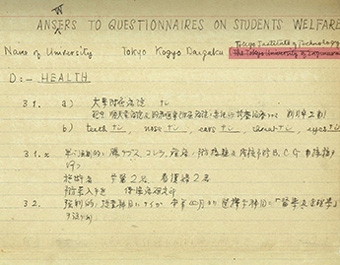
Archived manuscript in Japanese —
replies to the questionnaire on students' welfare,
with university name edited
 Click to enlarge
Click to enlarge
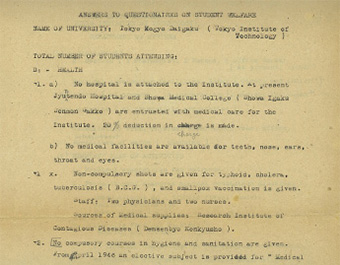
English translation of replies to the questionnaire on students'
welfare
What we can infer from these documents is that they were written soon after the change of the Institute's name from Tokyo University of Engineering to Tokyo Institute of Technology. There is a theory that the Institute was renamed in 1949 when significant reforms took place under the new education system promoted by the government, but based on these documents, it was more likely in 1946.
This article is an excerpt from a Tokyo Tech Museum and Archives flyer.
The Special Topics component of the Tokyo Tech Website shines a spotlight on recent developments in research and education, achievements of its community members, and special events and news from the Institute.
Past features can be viewed in the Special Topics Gallery.
. Any information published on this site will be valid in relation to Science Tokyo.
















